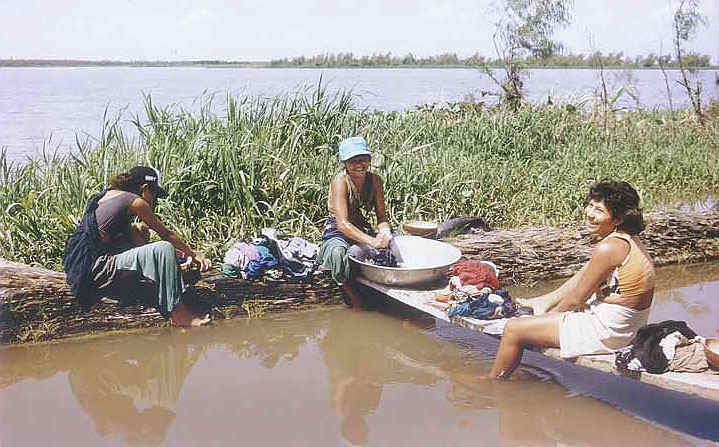
Mintz has been one of the leading anthropologists to have carved out a place for the anthropological study of peasants and seeing them `in the round' (see especially 1989). He has termed the development of the Caribbean peasantry one of `reconstitution'. In so doing he draws attention to the historical importance of colonial control. In particular he shows how the plantation system set the framework for the creation of a peasantry. The small holdings of the peasants were the logical and historical opposite to the plantation economy. The peasant economy developed because the plantation system could not incorporate the totality of forces and relations and there was significant resistance to it. The point is that the peasantry are not a passing social formation between aboriginal pre-capitalism and Caribbean capitalism. They are created in the conditions set by the growth of the early modern world economy.
Patterns of substantial agrarian self-sufficiency arose in the course of Caribbean history... Caribbean peasantries are, in this view, reconstituted peasantries, having begun life other than as peasants, as deserters or runaways, as plantation labourers, or whatever - and becoming peasants in some kind of resistant response to an externally imposed regimen. (1989:132).
Mintz thus moves explicitly away from the idea of adaptation, which was prevalent in American anthropology during his formative years. Furthermore he provides an detailed example of the generation of a peasantry in the early modernity of the New World (1996). Once the colonial apparatus was dismantled the peasantry were abandoned. Thus it was forced to find other ways of positioning itself in relation to the outside world in order to survive. It is this resilience, rather than resistance, that I am trying to capture and which goes hand in hand with the rhythms of their existence. Resistance has the sense of holding still and firm in the face of external change. Whereas I am saying that floodplain peasants success is their ability to move forward and try out new possibilities in the context of constant social and economic change. 
The history of the Amazon bears some parallels with the Caribbean (though clearly there remain significant differences). For example, both regions experienced the destruction of aboriginal societies on a massive scale, imposition of strict colonial structure, complete orientation of economy to external markets, influx of migrants and slaves to furnish labour, cultural reinvention in the array of cultural influences and with distinctive early modernities developing as a result. As Mintz says such `processes of cultural stripping and rebuilding awe us less in today's world' (1996:298). Two hundred or more years ago such reconstitution heralded a particular form of New World modernity. Thus Mintz's project in Caribbean Transformations is to understand how the fragments of the displaced African lives - relationships, skills and tools - were put to work. Such cultural development involves `innovative resiliency and creative integrity' (Mintz 1989:14).
It is with such forces in mind that I come to the floodplain peasants of the Amazon. They are the descendants of a mixed population of Amerindians and Europeans that evolved in relation to the colonial villages that organised all economic and social life until the end of the 18th century. In order to survive they drew on available resources - their origin had little importance - what mattered was that `choice, taste and preference become organised around specifiable ranges of acceptable variation' (Mintz 1989:139). Culturally, they were busy making themselves into their own persons (Mintz 1996:302).
Picture Above -Three young women washing some clothes on the banks of the Amazon.